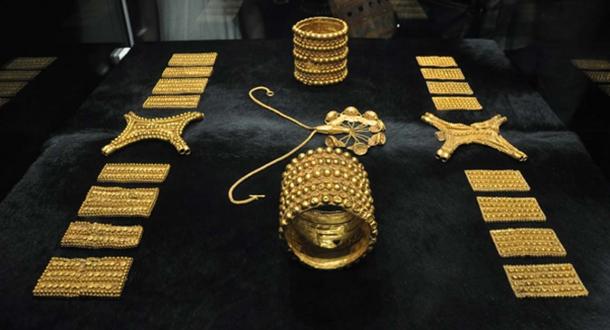Human Remains from the Tartessos Civilization Found at Site of Animal Slaughter
The Spanish newspaper El Pais has reported the discovery of human bones at an archaeological site dating back to the pre-Roman civilization of Tartessos in the south west of Spain. They have been uncovered in excavations of a large building which had seen the slaughter of many animals before being burned. The find should reveal insights into the little known about pre-Roman civilization and also how this once mighty society collapsed.

Approximate Tartessos cultural area. (CC BY-SA 3.0)
Tartessos Civilization
The site is located in the Spanish Province of Badajoz and is connected to the sophisticated Tartessos civilization that flourished approximately 2500 years ago. The Tartessos civilization flourished in south-west Iberia in the period from the 9 th to the 5 th century BC. The people of this civilization were sophisticated and rich, even impressing the Greek historians, notes El Pais. The civilization is recorded in Greek myth and Hercules is believed to have visited to the kingdom. Tartessos became immensely rich because of trade with the Phoenicians and the Greeks. It lasted some five centuries and its decline has been attributed to an invasion by Celtic tribes or some cataclysmic event such as climate change or an epidemic.
- 2,500-year-old city buried under flood sediment may belong to lost civilization in Spain
- Origins of Gold Spill the Secret of a Lost Culture. Does the Treasure of El Carambolo Lead to Atlantis?
- An Ancient Mine with Links to the Search for Life on Mars: Rio Tinto Reopens

Rich treasures have been found at other sites in the region. Treasure of El Carambolo, exhibited in the Archaeological Museum of Seville. (CC BY-SA 4.0)
Burnt Building Frozen in Time
The human remains were found in a two-story building dated to about 2500 years ago near the end of the Tartessian civilization. The building was built with very sophisticated engineering techniques and was partly constructed with a type of cement, several centuries before the Romans are believed to have developed that technology. It is believed to have been some sort of sanctuary and it contained a treasure trove of artifacts including part of a Greek statue.

The feet of a marble sculpture that originally came from the Aegean Sea. Image: Proyecto Construyendo Tarteso
Some 30 skeletons of animals, including horses were unearthed, and it seemed that they were sacrificed before the building was set on fire and buried, possibly as part of a religious ceremony reported El Pais in an article earlier this year. The mix of ashes and the clay in the soil helped to preserve the building and this makes this find so unique.
The Human Burial
Victoria Peña, from the University of Madrid, and co-director of the excavation stated that the human bones were found on the first floor of the building. They were surprised by finding a skeleton as the Tartessians usually cremated their dead. The remains were found with some other artifacts such as two bronze Spanish style heaters. The skeleton which is probably of a male is relatively intact, but the skull had been flattened by the weight of earth that had covered it for millennia.
- The Legend of Atlantis: Between Ancient Ruins and a Philosopher’s Tale
- The Mythic Scheria and the legendary Phaeacians
- Rhodes in Spain? The Tempestuous History of the Strategic Coastal City of Roses

Anthropologist Victoria Peña with the bones found at the Tartessos site in Badajoz. Image: J. M. Romero/ El Pais
According to Sebastian Celestino, an archaeologist and co-director of the excavation, the location of the skeleton can tell the team something about the individual, because the remains were, ‘found by a door with a spearhead beside them, makes us think they belonged to a sort of watchman’ recorded El Pais. The exact cause of death of this individual is unknown but once it is discovered it can help the experts to better understand the site.
Deep Insight
The site in Badajoz is providing unprecedented insights into Tartessian civilization and the discovery of the remains is expected to reveal many more. The teeth will allow experts to determine what the person ate, and this can give an indication of life in this ancient and enigmatic society. They and the bones which have been removed for further study will be subjected to DNA analysis. The DNA can also tell us about the origins of these people and if they are related to the present-day inhabitants of Badajoz Province.
The site in Badajoz is allowing archaeologists to reconstruct aspects of Tartessos, providing them with precious DNA evidence and this, together with the building, can transform our knowledge of this great but until now, largely lost civilization. However, despite the discovery of the remains it is believed that much about the civilization will remain mysterious for some time. This is especially the case when it comes to this culture’s decline and its enigmatic and unexplained collapse in the 5 th century BC.
Top image: Anthropologist Victoria Peña with the bones found at the Tartessos site in Badajoz. Source J. M. Romero /El Pais




















Comments
tartessos is tarshish